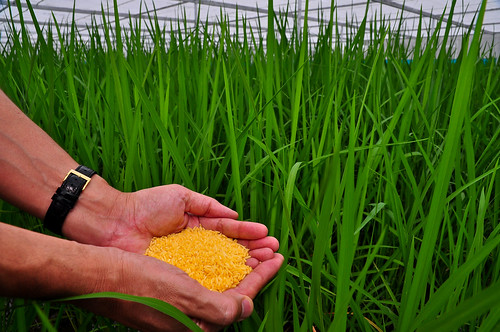FDA Approves Gluten-Free Label
The Food and Drug Administration has issued the first legally binding label for “gluten-free” food products. ?For the 3 million people in the U.S. who have celiac disease and/or gluten-sensitivity, this label will make food  purchasing much easier. Although many food items currently have gluten-free labels, there has never been an official standard for exactly how free of gluten such foods have to be. The FDA’s new rule says gluten free foods can’t contain more than 20 parts per million of gluten. Below that level, gluten can’t be detected reliably and only very rare individuals would react to it. According to the FDA, most gluten-free food on the market already meets this standard. It goes into effect one year from now.
purchasing much easier. Although many food items currently have gluten-free labels, there has never been an official standard for exactly how free of gluten such foods have to be. The FDA’s new rule says gluten free foods can’t contain more than 20 parts per million of gluten. Below that level, gluten can’t be detected reliably and only very rare individuals would react to it. According to the FDA, most gluten-free food on the market already meets this standard. It goes into effect one year from now.
Farmers Destroy ?Golden Rice? GMO Trials in Philippines
On Thursday, August 8th, 400 farmers in Camarines Sur, Phillipines destroyed experiment fields of genetically modified Golden Rice. The farmers represented two Philippine anti-GMO  groups: the Kilusang Magbubukid ng Bikol (KMB) and the Sararong Inisyatiba nin Kahinwanmaan sa Wasakon ang Agrokemikals na Lasong-GMO (Sikwal-GMO). ?Recognized as a danger to the health of the environment and a threat to biodiversity, the rice was uprooted and trampled on. The International Rice Research Institute (IRRI), the Department of Agriculture and the Philippine Rice Research Institute (PhilRice) state that that the purpose of the development of Golden Rice is to fight malnutrition and to reduce vitamin A deficiency. The reality is that like all GMO?s, Golden Rice production is purely motivated by profit, with little to no independent research being conducted on the safety risks of consumption. The farmers who participated in this protest deserve praise for recognizing the many dangers of GMOs.
groups: the Kilusang Magbubukid ng Bikol (KMB) and the Sararong Inisyatiba nin Kahinwanmaan sa Wasakon ang Agrokemikals na Lasong-GMO (Sikwal-GMO). ?Recognized as a danger to the health of the environment and a threat to biodiversity, the rice was uprooted and trampled on. The International Rice Research Institute (IRRI), the Department of Agriculture and the Philippine Rice Research Institute (PhilRice) state that that the purpose of the development of Golden Rice is to fight malnutrition and to reduce vitamin A deficiency. The reality is that like all GMO?s, Golden Rice production is purely motivated by profit, with little to no independent research being conducted on the safety risks of consumption. The farmers who participated in this protest deserve praise for recognizing the many dangers of GMOs.
Poor Children Show a Decline in Obesity Rate
With childhood obesity running rampant throughout the country, federal researchers have found the clearest evidence yet that the epidemic may be turning a corner in young  children from low-income families. The obesity rate among preschool-age children from poor families fell in 19 states and United States territories between 2008 and 2011, the first time a major government report has shown a consistent pattern of decline for low-income children after decades of rising rates. Some of the nation?s highest rates of obesity are found among children of poor families. One in eight preschoolers in the United States is obese. Among low-income children, it is one in seven. The cause of the decline remains a mystery, but researchers offered theories, like an increase in breast-feeding, a drop in calories from sugary drinks, and changes in the food offered in federal nutrition programs for women and children. In interviews, parents suggested that they have become more educated in recent years, and so are more aware of their families? eating habits and of the health problems that can come with being overweight.
children from low-income families. The obesity rate among preschool-age children from poor families fell in 19 states and United States territories between 2008 and 2011, the first time a major government report has shown a consistent pattern of decline for low-income children after decades of rising rates. Some of the nation?s highest rates of obesity are found among children of poor families. One in eight preschoolers in the United States is obese. Among low-income children, it is one in seven. The cause of the decline remains a mystery, but researchers offered theories, like an increase in breast-feeding, a drop in calories from sugary drinks, and changes in the food offered in federal nutrition programs for women and children. In interviews, parents suggested that they have become more educated in recent years, and so are more aware of their families? eating habits and of the health problems that can come with being overweight.

Comments are closed.